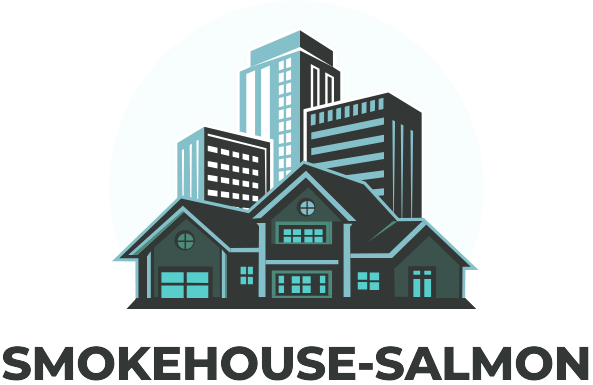Exploring a new neighborhood can feel like stepping into a world of possibilities. From charming coffee shops to vibrant parks, each area has its own unique character waiting to be discovered. A well-crafted neighborhood guide serves as a roadmap, helping residents and newcomers alike navigate the hidden gems and local favorites that make each community special.
Whether someone is looking for the best brunch spot or the perfect place to unwind after a long day, a neighborhood guide offers insights that go beyond the typical tourist attractions. It highlights the essence of the area, showcasing its culture, history, and the people who call it home. With the right guide in hand, anyone can experience the true heartbeat of their neighborhood, creating memories that last a lifetime.
Table of Contents
ToggleWhat Is a Neighborhood Guide?
A neighborhood guide serves as a comprehensive resource for individuals exploring a specific area. It highlights essential aspects of the community, including local businesses, points of interest, and cultural landmarks. A well-structured guide offers insights that cater to both residents and newcomers, showcasing places like cafes, parks, and recreational facilities.
Key elements of a neighborhood guide include:
- Local Businesses: Descriptions of shops, restaurants, and services that embody the neighborhood’s character.
- Recreational Areas: Information on parks, gyms, and outdoor spaces that promote community engagement.
- Cultural Attractions: Details about museums, galleries, and theaters that reflect the area’s cultural heritage.
- Historical Context: Narrative on the neighborhood’s history and significant events that shaped its identity.
- Community Events: Listings of regular gatherings, festivals, and activities that encourage socialization and connection among residents.
Neighborhood guides aim to foster a sense of belonging and support exploration, helping individuals forge connections with their environment through curated experiences and insights.
Importance of a Neighborhood Guide

Neighborhood guides play a crucial role in connecting individuals to their communities. By providing detailed insights into local life, these guides help residents and newcomers alike navigate their surroundings effectively.
Understanding Community Dynamics
Understanding community dynamics involves recognizing the social fabric and cultural nuances of the neighborhood. Neighborhood guides detail the demographics, showcasing residents’ diversity and backgrounds. They highlight community events, fostering engagement among locals. Guides also map out local services, such as schools and healthcare facilities, which support community welfare. Awareness of local challenges, like traffic patterns and safety concerns, further informs individuals, enabling informed decisions and stronger community ties.
Enhancing Relocation Decisions
Enhancing relocation decisions begins with acquiring thorough information about a neighborhood. Neighborhood guides compile data on housing options, rental prices, and property trends, helping potential movers assess affordability. They provide insights into amenities, such as grocery stores, parks, and dining options, crucial for lifestyle compatibility. Reviews and ratings within guides focus on the quality of local schools and recreational facilities, influencing family decisions. Access to public transport options and commute times to work locations also weighs heavily in relocation considerations. Ultimately, these guides help individuals make confident choices about their new surroundings.
Key Elements of a Neighborhood Guide
Neighborhood guides provide vital information that enhances the experience of living in or exploring an area. They cover essential elements such as local amenities, safety, crime rates, and education options.
Local Amenities
Local amenities significantly affect quality of life. These include grocery stores, pharmacies, and recreational facilities. Parks, fitness centers, and community centers contribute to outdoor and social activities. Residents often seek nearby coffee shops, restaurants, and entertainment venues for everyday convenience. Accessibility to public transport options also plays a critical role in maintaining connectivity within the neighborhood.
Safety and Crime Rates
Safety and crime rates are crucial for potential residents. Neighborhood guides typically include statistics from law enforcement agencies to inform individuals about crime trends. Emphasizing lower crime rates often attracts families and individuals concerned about safety. Information about neighborhood watch programs and community safety initiatives offers further assurance of a secure living environment.
Schools and Education
Schools and educational institutions are essential considerations for families. Neighborhood guides often provide information on school rankings, programs, and extracurricular activities. Proximity to quality public and private schools influences relocation decisions. Access to libraries and educational resources enriches community life and supports lifelong learning opportunities.
How to Create an Effective Neighborhood Guide
Creating an effective neighborhood guide involves thorough research and an understanding of local dynamics. The following sections outline key strategies to ensure a comprehensive and engaging guide.
Research Approaches
- Analyze Demographics: Collect data on the neighborhood’s population size, age distribution, and diversity. Understanding demographics provides insights into the community’s character and preferences.
- Map Local Businesses: Identify and categorize local shops, restaurants, and service providers. Gathering information on their specialties, operating hours, and customer reviews enriches the guide’s content.
- Survey Community Facilities: Document parks, gyms, libraries, and other recreational areas. Assessing their amenities and accessibility helps newcomers gauge their options for leisure and activities.
- Investigate Historical Context: Research significant events or figures tied to the neighborhood’s past. Including historical narratives deepens the reader’s connection to the area.
- Compile Transportation Information: Gather data on public transport options, major roadways, and walkability scores. Highlighting transportation resources eases the transition for newcomers.
Utilizing Local Insights
- Conduct Interviews: Speak with long-time residents or local business owners. Personal anecdotes and experiences can offer unique perspectives that engage readers.
- Engage Community Forums: Participate in local online groups or attend community meetings. These forums provide real-time updates on events and initiatives, enhancing the guide’s relevance.
- Leverage Social Media: Monitor neighborhood-specific social media channels for trends and happenings. This provides a pulse on community interests and events.
- Highlight Cultural Events: Include information on festivals, markets, or art exhibitions frequently held in the area. Cultural events foster engagement and provide insights into the neighborhood’s vibrancy.
- Update Regularly: Schedule routine evaluations of the guide’s content and make necessary adjustments. Maintaining accuracy and freshness ensures readers rely on the guide as a trustworthy resource.
Exploring a neighborhood becomes a richer experience with a well-crafted guide. It not only highlights local favorites but also uncovers the unique stories that shape the community. By embracing the culture and history, individuals can create meaningful connections and lasting memories.
A comprehensive neighborhood guide empowers residents and newcomers alike. It provides essential information on local amenities, safety, and community events. This resource fosters engagement and encourages exploration, making it easier for individuals to feel at home in their surroundings.
Ultimately, a neighborhood guide is more than just a list of places. It’s a gateway to understanding the heart of a community, inviting everyone to discover the vibrant life that awaits just outside their door.




